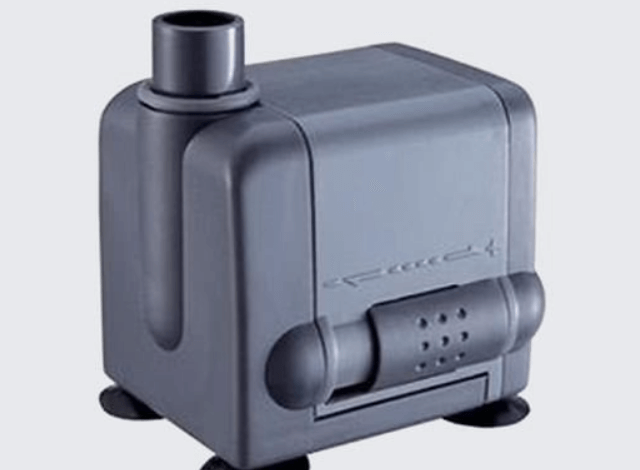
A submersible pump is a crucial component of any outdoor fountain, ensuring smooth water circulation and enhancing the aesthetic appeal of your garden. The right pump helps maintain the fountain’s beauty by creating a soothing water flow while keeping it clean and debris-free. However, choosing the right one can be challenging with various types of submersible pumps available on the market. This guide will walk you through essential factors to consider when selecting the perfect submersible pump for your outdoor fountain.
Understand the Purpose of a Submersible Pump
Before you get a fountain submersible pump, it’s essential to understand its purpose. A submersible pump is designed to push water through the fountain, creating the desired water flow and effects. It is placed underwater, typically at the fountain’s base, and operates quietly without disturbing the peaceful ambiance. The pump not only circulates water but also keeps it aerated, helping to prevent stagnation and algae buildup.
Calculate the Fountain’s Water Volume
One of the first steps in selecting a submersible pump is determining the amount of water your fountain holds. This is important because pumps come in different capacities, and you’ll want one that can handle the desired volume of your fountain. To calculate the water volume, use the following formula:
Water Volume (gallons) = Length (ft) x Width (ft) x Depth (ft) x 7.48
Once you know the total volume, you can look for a pump with the appropriate capacity to circulate the water efficiently. For example, if your fountain holds 100 gallons of water, you’ll need a pump that can handle at least 100 gallons per hour (GPH). Generally, the pump should cycle the fountain’s water every hour for optimal water circulation.
Consider the Desired Water Flow and Height
The water flow rate and the fountain’s water feature height are critical factors in choosing a submersible pump. The flow rate is measured in gallons per hour (GPH), while the head height refers to the vertical distance the pump needs to push the water. The higher the head height, the more powerful the pump needs to be.
Pumps with a lower GPH, such as 50 to 100, are sufficient for small fountains with gentle flows. However, you’ll need a more powerful pump with a higher GPH for larger fountains with cascading waterfalls or higher water spouts. Check the manufacturer’s recommendations for your fountain’s head height, as this will help determine the strength of the pump needed to create the desired water effects.

ImageURL- https://www.fountaintechpumps.com/wp-content/uploads/2022/10/fountain-tech-ft-70-o.jpg
Evaluate Pump Size and Placement
The size of the submersible pump is another important consideration. You’ll need a pump that fits comfortably in the fountain’s basin or reservoir. If the pump is too large, it could be difficult to conceal or may affect the aesthetics of the fountain. On the other hand, a pump that’s too small might not provide the necessary power to maintain proper water circulation.
Additionally, ensure the pump’s intake area remains submerged to prevent it from running dry. An improperly sized pump may cause the water to splash out of the fountain, reducing the water level and exposing the pump.
Look for Energy Efficiency
Submersible pumps run continuously, making energy efficiency an essential factor to consider. Choose an energy-efficient pump to keep operational costs down without compromising performance. Many modern pumps have energy-saving features that allow you to run your fountain without worrying about high electricity bills.
Pumps with adjustable flow rates are handy. They let you control the water output based on your needs. You can reduce the flow during off-peak hours, further saving energy.
Check the Durability and Material
Since a submersible pump operates underwater, it must be durable and resistant to water damage. Pumps made from corrosion-resistant materials like stainless steel or high-quality plastic tend to last longer and require less maintenance. Ensure that the pump is designed for outdoor use, as it will be exposed to weather conditions, such as rain and fluctuating temperatures.
It’s also important to choose a pump that’s easy to clean and maintain. Some pumps come with pre-filters that help prevent debris from clogging the system. A pump with replaceable or washable filters can significantly extend its lifespan and reduce the need for repairs.

ImageURL- https://www.fountaintechpumps.com/wp-content/uploads/2022/10/fountain-tech-ft-160.jpg
Consider Noise Levels
One of the main reasons people install outdoor fountains is to create a peaceful, relaxing environment. A noisy pump can ruin that tranquility, so you must consider the noise levels of the pump you choose. Most submersible pumps are designed to operate quietly, but it’s still a good idea to read reviews and check product descriptions to ensure the pump you select runs smoothly without disturbing the ambiance of your garden.
Conclusion
Choosing the right submersible pump for your outdoor fountain involves carefully considering several factors, including water volume, flow rate, head height, energy efficiency, and durability. By evaluating these elements, you’ll be able to select a pump that will keep your fountain looking and functioning beautifully for years to come.
Investing in the right submersible pump will enhance the overall aesthetic of your outdoor space, create a relaxing atmosphere, and ensure your fountain runs smoothly. Whether you’re looking for a gentle trickle or a cascading waterfall, the right pump will bring your fountain to life easily and efficiently.




